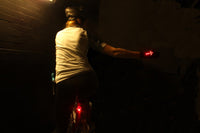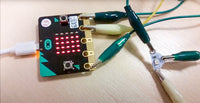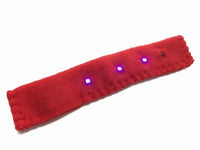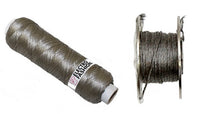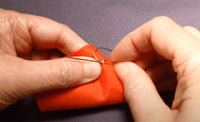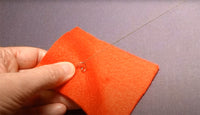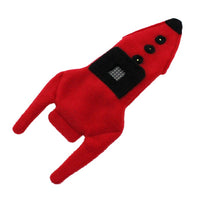

Buy locally from a partner
Description
Same Day Dispatch
- Orders placed online before 3:00pm Monday - Friday (excluding public holidays and our Christmas shutdown period) are always dispatched the same day provided the goods are in stock. If the goods are not in stock we will endeavour to contact you as soon as possible to discuss a dispatch date.
UK Deliveries
- If you live on the UK mainland and don't have any large materials or lithium batteries in your order it will cost £3.95 (£4.74 including VAT) if you spend less than £40 (£48 including VAT).
- If you spend between £40 and £200 (£48 - £240.00 including VAT, excluding large materials or lithium batteries) delivery is free to most locations, £12 (£14.40 including VAT, excluding large materials or lithium batteries) to Northern Ireland and £15 (£18.00 including VAT, excluding large materials or lithium batteries) to UK remote locations. For a list of postcodes that will be charged the remote location rate: remote area list.
- If you spend over £200 (£240.00 including VAT, excluding large materials or lithium batteries) delivery is free within the UK.
Rest of the world
- These orders are sent via UPS, and the cost is dependant on the service you choose at checkout. Alternatively you can choose the free collection option and have your own courier collect it from us. International orders can only be shipped to the registered card address. Please note: International orders may be charged import duty dependant on local import laws and duty rates. These charges are usually billed to you directly from UPS.
- Delivery times vary for international orders depending on the service selected and the destination. You can see the delivery time and cost at the shipping stage, or by using the shipping estimator from within the shipping basket.
Collection
- If you would like to collect your order, or use your own courier then there is an option you can select during checkout. We do not charge a packaging or handling fee for this service, and you will receive an email when your order has been processed, you can collect half an hour after receipt of this email.
Further Information
- For information about all of the delivery options we offer see full delivery details.
Circuit diagramStitched equivalent The basic E-Textile LED circuit is very simple and created by placing the LEDs in parallel with the battery. This is shown in the circuit diagram above...
Circuit diagramStitched equivalent The basic E-Textile LED circuit is very simple and created by placing the LEDs in parallel with the battery. This is shown...
There are two basic stitches that are used in E-Textiles circuits: oversewing stitches and running stitches. Here, you can learn the basics.Oversewing StitchThis stitch is used to hold the rings...
There are two basic stitches that are used in E-Textiles circuits: oversewing stitches and running stitches. Here, you can learn the basics.Oversewing StitchThis stitch is...
This Kitronik University resource is part of the BBC micro:bit partnership and is an in depth tutorial into making an emoji bag with the the BBC micro:bit and Kitronik free...
This Kitronik University resource is part of the BBC micro:bit partnership and is an in depth tutorial into making an emoji bag with the the...
VisiGlove is an E-Textile hack to a standard pair of cycling gloves to provide a lit signal when turning, and is controlled from the glove itself simply by pressing the...
VisiGlove is an E-Textile hack to a standard pair of cycling gloves to provide a lit signal when turning, and is controlled from the glove...
Learn how to add additional light sensing to the BBC micro:bit with this very simple tutorial. The video below shows the light sensing function in action. For those times when...
Learn how to add additional light sensing to the BBC micro:bit with this very simple tutorial. The video below shows the light sensing function in...
Below is a list of common faults that can stop your final circuit from working.Thread touching / shorting.It is important to ensure that the positive and negative connecting pieces of...
Below is a list of common faults that can stop your final circuit from working.Thread touching / shorting.It is important to ensure that the positive...
Description Make a funky light up collar for a dog with this easy to follow tutorial! The collar is made from felt and uses three easy sew LEDs and a...
Description Make a funky light up collar for a dog with this easy to follow tutorial! The collar is made from felt and uses three...
Conductive thread is an integral part of e-textiles as it provides the essential 'wiring' for any e-textiles project. Sarah Davies from Nottingham Trent University gives an overview of ours. ...
Conductive thread is an integral part of e-textiles as it provides the essential 'wiring' for any e-textiles project. Sarah Davies from Nottingham Trent University gives...
Once you've mastered starting off your stitches, the next step is to finish off the ends of your stitches securely to stop them from coming undone. Take your needle to...
Once you've mastered starting off your stitches, the next step is to finish off the ends of your stitches securely to stop them from coming...
This cute little dog has a magnet hidden away inside his bone, and when the bone is placed in his mouth the LED in his nose lights up. The dog...
This cute little dog has a magnet hidden away inside his bone, and when the bone is placed in his mouth the LED in his...
One you've chosen and threaded your needle, the next step is starting off your stitches. Here are some handy tips and techniques to help get you started!Use a single strand...
One you've chosen and threaded your needle, the next step is starting off your stitches. Here are some handy tips and techniques to help get...
Conductive thread is ideal for introducing electronics into textiles projects. The thread looks and behaves like conventional sewing thread with the added bonus of being conductive, allowing the thread to...
Conductive thread is ideal for introducing electronics into textiles projects. The thread looks and behaves like conventional sewing thread with the added bonus of being...
This Kitronik University resource is part of the BBC micro:bit partnership and is an in depth tutorial. We demonstrate how to make countdown rocket pencil case with the BBC micro:bit...
This Kitronik University resource is part of the BBC micro:bit partnership and is an in depth tutorial. We demonstrate how to make countdown rocket pencil...
I was wondering if you can sell your thread in any higher quantities than 50 yards? Also, would you be willing to send me a sample so that I can test the durability and heat resistance of your product, and compare it to the thread I am already using.
Thank you for your time, I hope to hear back from you soon.
Hi Catriona, after performing some tests we recommend a current of 250mA, with a maximum current of 500mA being passed through the thread. At 500mA the thread began to get warm, however this was only warm and not hot, as such this would still be a safe working current.
You can't solder the conductive thread, it would just burn if you tried to solder it.
Raising the voltage will put more power through the thread though and that will cause it to heat up and eventually burn out.
The solution is, as you identified, to lower the resistance by adding more threads. Each time you double the distance to the battery you double the resistance, which can be counteracted by using twice as much thread. (2 threads instead of 1, or 4 threads instead of 2).
Balancing them perfectly would be quite difficult though.
Ask a question about this product
Payment & Security
Your payment information is processed securely. We do not store credit card details nor have access to your credit card information.




